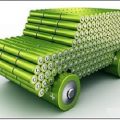PTE考生目前最大的问题之一就是练习题缺乏。除了有限的基本官方书(PLUS,Testbuilder,OG)之外就没有题了。很多英语基础不是很扎实的同学很难找到练习材料。悉尼文波PTE雅思培训学校专门为澳洲,尤其是悉尼、墨尔本的PTE考生准备了适合PTE听力阅读练习的科学60秒。各位PTE同学可以练习PTE听力中的summarise spoken text和PTE口语中的retell lecture,记笔记技巧和复述。下面开始:
As the winter chill sets in, it’s time to bundle up and keep warm. These days you will find an almost limitless selection of winter clothing to do just that.
But which materials keep you the warmest? This is Scientific American 60 Second Science, I am Jay Level, Got a minute?
To figure out which was warmest, we tested two materials, cotton and wool. Both when dry and when wet.
To simulate a human body, we filled two identical beakers with water at 44 degrees Celsius, covered them with cotton and wool socks of similar thickness, and left them in front of a slight breeze for ten minutes.
Let’s check.
The wool cover beaker is still warm but the cotton beaker is slightly chillier.
The temperature of the cotton beaker was slightly lower about 1 degree cooler.
To understand the reason for this, we need to look at the structure of these materials. Wool fibres are scaly and crimped, so there are tiny air pockets in the fabric, these air pockets hold warm air close to your body creating insulation.
Cotton fibres are smooth, so they pack tightly together, meaning fewer air pockets and less insulation.
When we tested our wet fabrics, these structural differences came out even more.
Our wool beaker was still warm at 32 degree Celsius, but our cotton beaker dropped all the way to 28 degrees.
This maybe because cotton fibres are hydrophilic or water loving, which means they absorb large amounts of water, filling up the air pockets, keeping the wetness against your skin and cooling you down. Wool also absorbs water but the air pockets are still present, keeping you insulated.
Wool can absorb up to 30% of its weight in water, while still retaining most of it’s insulating properties.
So when you shopping for warm clothes this winter, don’t forger it’s the air pockets in wool that keep you warm.





